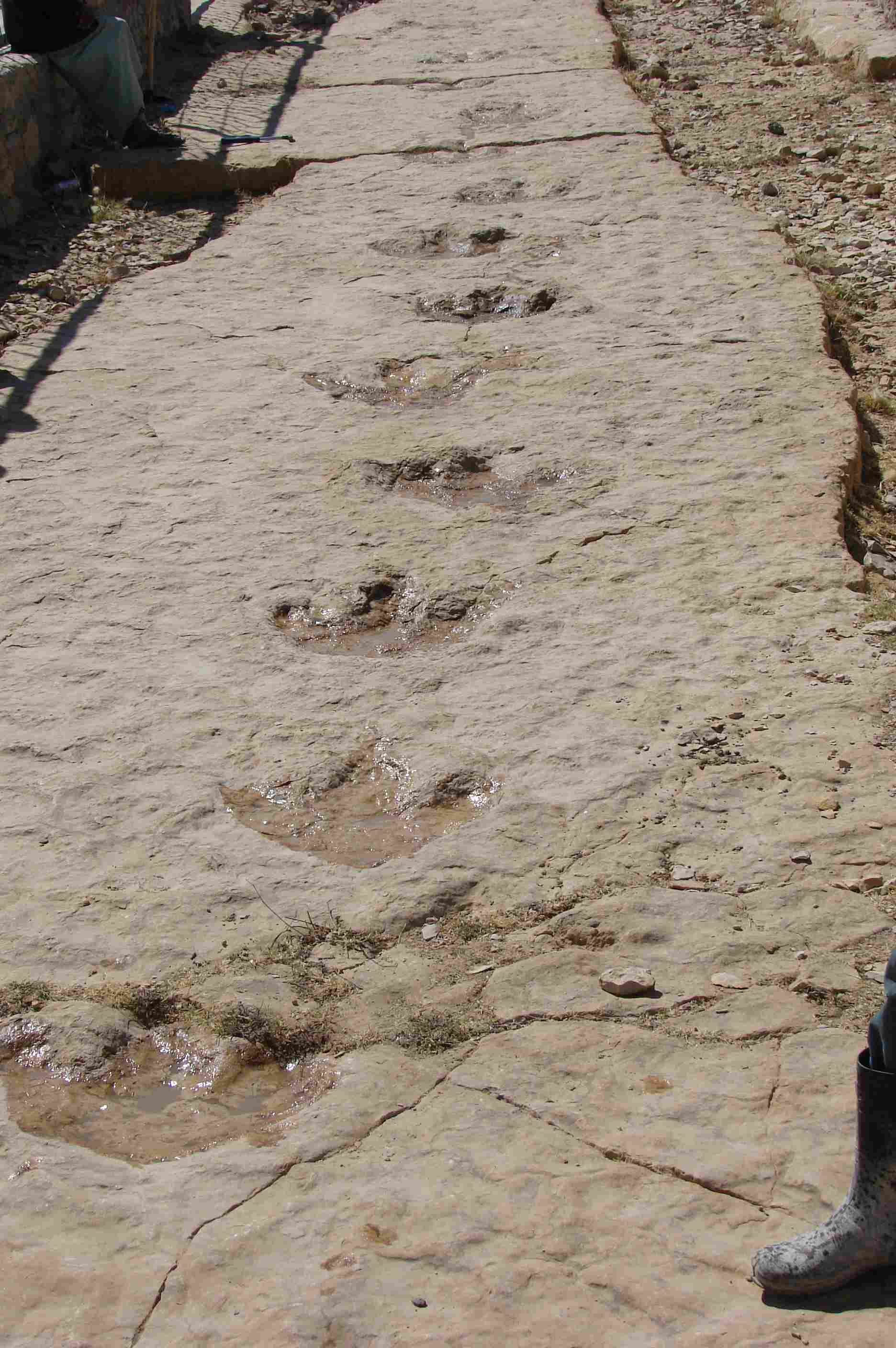Science news

20-May-2008
First dinosaur tracks on Arabian Peninsula

Scientists have found the first dinosaur tracks on the Arabian Peninsula. They belong to a large ornithopod dinosaur. There are signs too of a herd of 11 sauropods walking along a Mesozoic mudflat in what is now the Republic of Yemen.
The research is reported in the May 21 issue of the journal PLoS ONE.
No dinosaur tracks have ever before been found in this area, says Anne Schulp of the Maastricht Museum of Natural History in the Netherlands. "It’s really a blank spot on the map."
Schulp carried out the study with Ohio University palaeontologist Nancy Stevens and Mohammed Al-Wosabi of Sana’a University in Yemen.
Cold-blooded but sociable
The discovery is a good example of dinosaurs moving in herds, say the scientists. The site has footprints of 11 small and large sauropods — long-necked, herbivorous dinosaurs that lived in the Jurassic and Cretaceous periods — all travelling together at the same speed.
“It’s rare to see such a big example of a dinosaur herd,” Schulp said. “This is interesting social behaviour for reptiles.”
The trackways were first spotted in 2003 by a Yemeni journalist. They are about 50 kilometres north of the capital of Sana’a in the village of Madar.
The three scientists, Stevens, Al-Wosabi and Schulp, identified them as the footprints of an ornithopod, a large, common plant-eater that walked on its hind legs. It is sometimes called the “cow of the Mesozoic".
Fossil findings
Only a few dinosaur fossils have been reported so far from the Arabian Peninsula. These include isolated bones from the Sultanate of Oman, which Schulp has studied, and possible fragments of a long-necked dinosaur from Yemen.
In late 2006, the research team did more fieldwork at the Madar site. By taking measurements on the shape and angle of the different digits, they were able to identify the bipedal dinosaur as an ornithopod.
They then studied the size, shape and spacing of the quadrupedal prints. They were able to work out the body size, travel speed and other distinguishing features of the animals in the sauropod herd.
The rocks the dinosaur tracks are preserved in are probably Late Jurassic in age, around 150 million years old, says Al-Wosabi. The tracks probably went unnoticed for so long, Schulp explains, because they were too big to be spotted by the untrained eye. They were also partly covered by rubble and debris. “It isn’t a surprise that they were overlooked.”
Although ornithopods and sauropods overlapped in time, it is unusual to find evidence of such a big ornithopod in the late Jurassic, the researchers say.
More questions than answers
“We really want to learn when did which dinosaurs live where, and why was that?” Schulp said. “How did the distribution change over time. Why did one replace another and move from one place to another?”
The new discoveries from Yemen could give some answers to these questions.
The international collaboration has opened a new window into evolutionary history, said Stevens. She is an assistant professor in Ohio University’s College of Osteopathic Medicine.
“These trackways help us to assemble a more detailed picture of what was happening on the southern landmasses. It’s exciting to see new palaeontological data coming out of Yemen – and I think there is a lot more to discover.”
The Yemen Geological Survey has put in place protective measures to preserve the trackways and to make them more accessible to tourists.
More help with words
| breed | era | dominant | evolution | fertile | fossil |
| geologic time | species |
What's it all about?
- What have the scientists found?
- What kind of dinosaur made them?
- What other kind of dinosaur have they found traces of?
- What is unique about these tracks?
- Scientists from three countries worked on the tracks. Name two of these countries.
- What does a sauropod eat?
- Do dinosaurs usually travel in herds?
- What word or phrase in the story gave you the answer to the last question?
- A few dinosaur fossils had been found before on the Arabian Peninsula. What were they?
- How did the scientists tell that the tracks of the dinosaur that walked on two legs belonged to an ornithopod?
- What three pieces of information did they use to work out the speed and size of the animals in the sauropod herd?
- Why were the tracks not spotted before?
- How do you think they could be "too big to be spotted by the untrained eye"?
- What does the discovery tell the scientists about ornithopods that was a little surprising?
- State a couple of questions that the scientists want to find answers to.
- In your own words what does "a new window into evolutionary history" mean?
- What would you do next if you were these scientists?
- What question would that be trying to answer?

